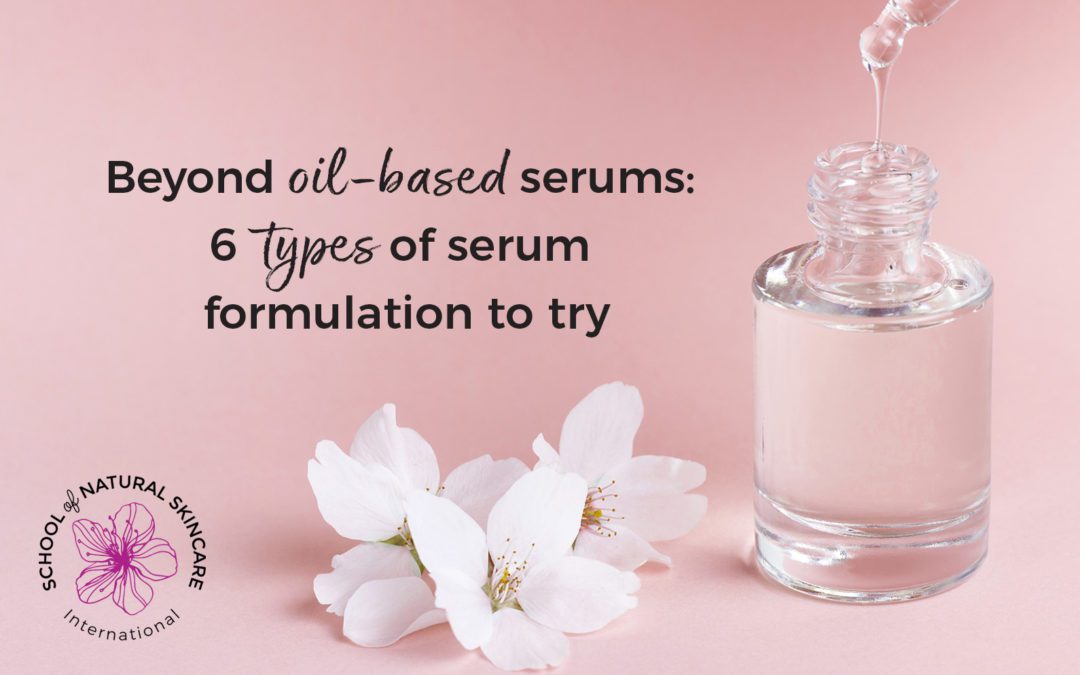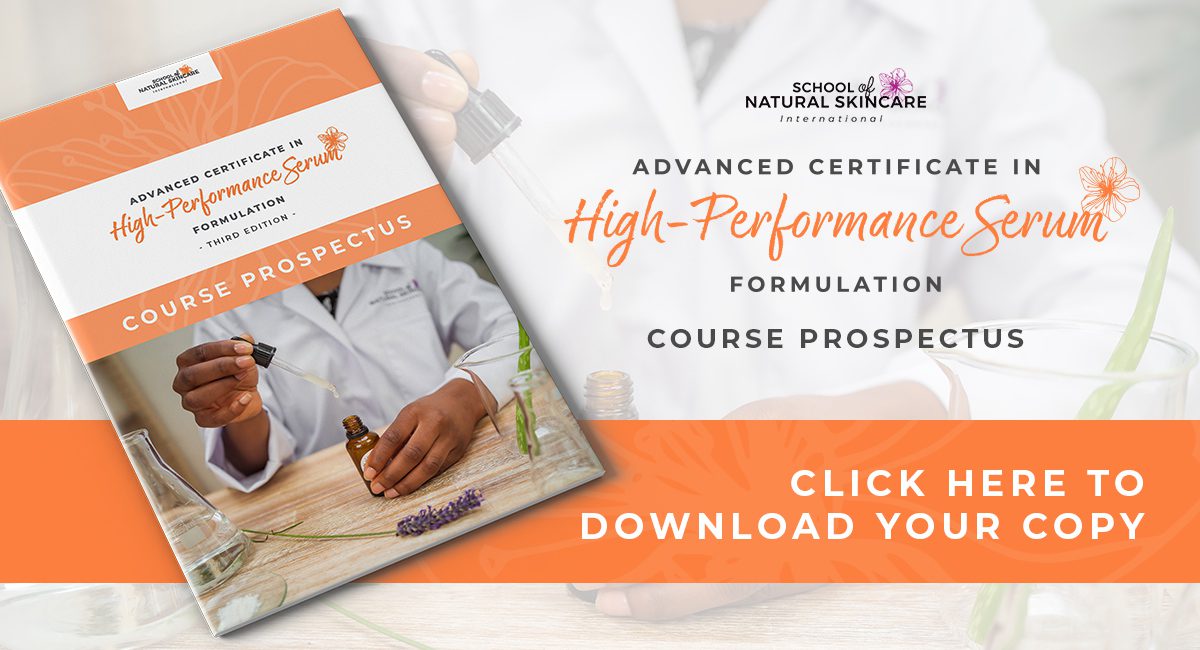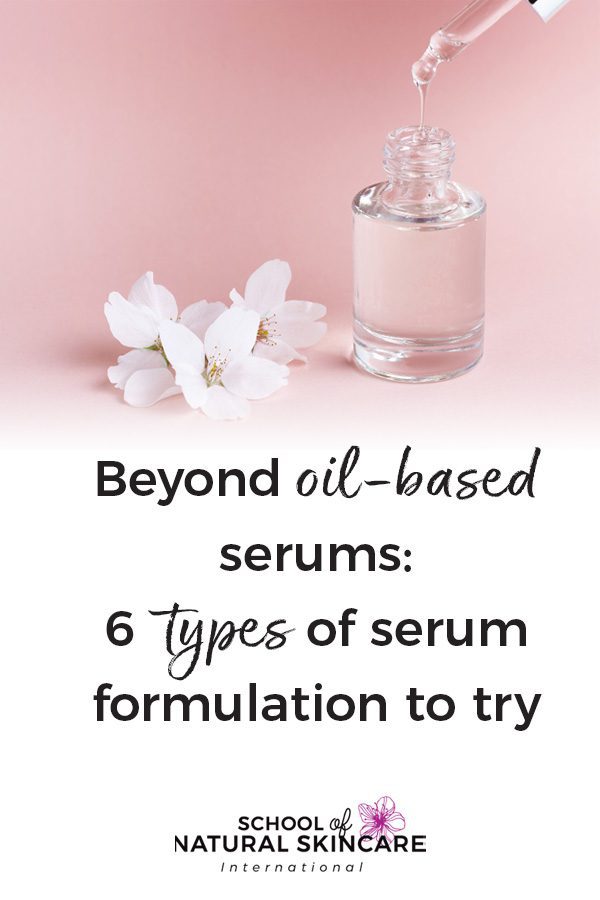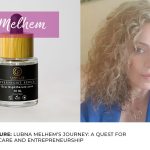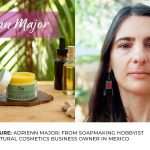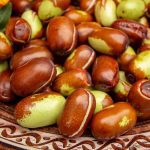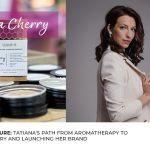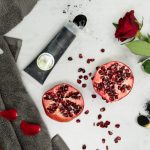Recently, we shared a little bit about why serums are good for your skin, the differences between face oils and face serums, primarily by describing the main differences between face oils and oil-based serums. But did you know that oil-based serums aren’t the only type of serums you can make?
And also, did you know that serums are for more than just your face?
There are actually six different types of serums you can make, all of which we will be covering in our upcoming serum-focused course: the Advanced Certificate in High Performance Serum Formulation. But, before you head over there and join the class, we wanted to give you all a sneak preview of some of what we’ll be covering, and what you’ll learn when you join us!
High Performance Oil-Based Serums
Often, this is the type that most people think of when they start looking for serums. Oil-based serums are mostly made of specialist carrier oils with the addition of actives and vitamins. They are rich and concentrated products with a fluid, liquid consistency.
Oil-based serums contain no water content. Because they have such a high quantity of oils, a little goes a long way! Depending on your choice of oils, this may make the product more expensive to produce. They can contain only oil-soluble ingredients, which limits your choice of ingredients, and since they have no water in them they won’t be hydrating. However, oil-based serums are great for creating a barrier on the skin to prevent trans epidermal water loss, and are a good choice for people with dry, oily, or normal skin who are looking for an emollient to smooth and soften the skin.
Regular oil-based serums can be turned into high-performance oil based serums by using a variety of oil soluble vitamins, lipophilic actives, potent antioxidants, and oil soluble botanical extracts such as carotenoids and ceramides.
Pressed Serums
Pressed serums are anhydrous products, similar to balms. They often use a wax or butter to create a firmer, semi-solid consistency. But in comparison to balms, they use more luxury oils and butters, higher concentrations of active ingredients, and special waxes such as floral waxes. They can also have a softer, jelly-like consistency rather than a typical balm feel.
They offer similar benefits to high-performance oil based serums in a convenient, semi-solid product.
Gel-Based Serums
This type of serum formulation is primarily an aqueous, or water-based product, and contains a thickener to create a more viscous product. They typically have a non-greasy, matte finish, and can be less expensive to produce as they can contain high amounts of water or hydrosol.
Gel-based serums are a great choice for people with normal, combination, and oily skin. People with oily skin can be very wary of applying more oil (even though oil can be an amazing choice!) This type of serum can also suit dry skin types especially if followed with a moisturizing cream.
One of the advantages of gel-based serums is that they are very hydrating. They are usually packed full of humectants which attract moisture and keep the skin hydrated and plump. They can also contain water-soluble actives such as AHA complex for exfoliating and moisturizing benefits or Vitamin B3 (niacinamide) for brightening benefits.
Emulsion-based Serums
When you take water-soluble and oil-soluble ingredients and combine them in an emulsion, you can produce a range of textures from thin to milky to creamy. This is the magic of emulsified serums! (You can also create gel-cream serums, which are halfway between a gel and a cream.) There is a large variety of emulsified serums catering to most skin types – depending on the ingredients chosen. Because you can use both water-soluble and oil-soluble ingredients, the range of what you can include is pretty wide! However, emulsions are more complex to formulate.
What’s the difference between a cream and an emulsified serum?
Well, both products are emulsions: stable mixtures of oil and water. But what makes a serum different from a cream is the ingredients. Serums contain a high percentage of active ingredients, like vitamins, botanical extracts, and antioxidants. Their main purpose is not to just moisturize and soften the skin, but to also bring a very specific benefit to the skin. They can have an anti-aging effect, sebum regulating effect, pollution protection effect, and so on.
Emulsified serums are great for all skin types, since they can be formulated to suit dry, oily, normal, or even sensitive skin. Emulsified serums combine the benefits of high-performance ingredients and the moisturizing effect of emulsions. They can actually be formulated to function as a serum+moisturizer type of a product, so they can make your skincare routine faster and more simple.
Gel-Cream Serums
Somewhere between a gel and a cream, gel-cream serums are light-weight and absorb quickly. They contain a large proportion of hydrating ingredients and water soluble actives (similar to a gel) but will also include emollient oils to create a very light, cream-like appearance and consistency with an elegant skin feel.
Biphase Serums
You all know that oil and water don’t mix, right? Not unless you emulsify them, of course… but if you leave them as they are, you end up with a really fun product that is separated into two distinct phases, a water-based phase and an oil-based phase, and must be shaken before each use. When it settles, your customers will see a really pretty separated product, with the oil-based ingredients on top, and the water-based ones below. Biphase serums need to be specially formulated to keep the two phases distinct, with an attractive appearance when allowed to settle but with the ability to mix together when shaken for effective use. An advantage of biphase serums are that they can contain both water and oil soluble actives, plus they are fun to make and use.
Biphase serums are great for people with normal, dry, and sensitive skin, while the high oil percentage might be a bit much for oily skin. If formulated to contain botanical ingredients that also add lovely color, biphase serums will look great on a shelf!
If you want to know more about how to make a natural face serum click here.
If you’re interested in learning more about how you can formulate these amazing serums for yourself, or for your customers, then we invite you to take a look at our newest course: the Advanced Certificate in High Performance Serum Formulation. It’s perfect for natural skincare formulators who want to learn how to work with a wide range of active ingredients including vitamins, antioxidants, peptides, ceramides, acids, botanical extracts and more, create targeted serums for specific skincare issues, or develop serums to add to their product lines. Come on over today and enroll!The course is fully revised, expanded, and will be open for enrollment in September of 2019, so come check it out!
Quick guide to formulating with Vitamin C
Ready to start supercharging your skincare formulations with high-performance ingredients?
Sign up to our weekly newsletter and receive your free guide and Vitamin C antioxidant serum formula today. - an exclusive gift from us!
In our quick guide to formulating with Vitamin C you'll learn:
- What is Vitamin C?
- What are the benefits of Vitamin C?
- What type of cosmetic is it suitable for
- Stable forms of Vitamin C and how to use them.
Plus we’ll share with you a Vitamin C antioxidant serum formula you can make yourself!
You'll also discover the amazing benefits Vitamin C offers for the skin:
Loved learning about serum? Save this image below on Pinterest so you can be sure to remember!

